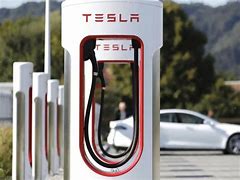Demystifying On-Board Charger how do they work
In the era of electric vehicles (EVs), the on board charger (OBC) stands as a vital component, facilitating the crucial process of replenishing the vehicle's battery. While many EV owners are familiar with charging stations and cables, the inner workings of the on-board charger often remain a mystery. In this blog post, we'll delve into the intricacies of on-board chargers, shedding light on how they function and their significance in the world of electric mobility.
Understanding the On-Board Charger
At its core, an on-board charger is an essential component integrated within an electric vehicle, responsible for converting AC (alternating current) from an external power source into DC (direct current) for charging the vehicle's battery pack. Unlike charging stations found in public spaces, which perform the same task but are external to the vehicle, an on-board charger is compactly built into the vehicle itself.
The Working Principle
The on board charger operates through a series of steps, beginning with the connection to an external power source, such as a home charging station or public charging point. Here's a simplified breakdown of how it works:
AC to DC Conversion: The on-board charger first converts the incoming AC power from the grid into DC power. This is typically done through a process called rectification, where AC voltage is converted into pulsating DC voltage.

Voltage Regulation: Following rectification, the DC voltage undergoes regulation to ensure it meets the requirements of the vehicle's battery pack. This step involves controlling the voltage output to match the battery's charging specifications, preventing overcharging or undercharging.
Charging the Battery: Once the voltage is regulated, the DC power is directed to the vehicle's battery pack for charging. The charging process is managed by the vehicle's Battery Management System (BMS), which monitors factors such as battery temperature, voltage, and state of charge to optimize charging efficiency and battery health.
Safety Features: On-board chargers are equipped with various safety features to protect both the vehicle and the user during the charging process. These may include measures to prevent overheating, short circuits, or voltage surges.
Communication with External Systems: Many modern on-board chargers are equipped with communication capabilities, allowing them to interact with external systems such as smart grid infrastructure or mobile applications. This enables features like remote monitoring, scheduling charging sessions, and optimizing charging based on energy rates or grid demand.

Significance in Electric Mobility
The on board charger plays a crucial role in enabling the widespread adoption of electric vehicles by providing a convenient and efficient means of charging. Its integration within the vehicle eliminates the need for external charging equipment, allowing EV owners to charge their vehicles wherever AC power is available.
Furthermore, advancements in on-board charger technology, such as higher charging capacities and improved efficiency, contribute to reducing charging times and extending the driving range of electric vehicles. This, in turn, helps alleviate concerns regarding range anxiety and accelerates the transition to electric mobility.
While often overlooked, the on board charger serves as a fundamental component of electric vehicles, facilitating the process of charging and ensuring the seamless integration of EVs into our daily lives. Understanding how on-board chargers work not only enhances our appreciation for the engineering behind electric mobility but also empowers us to make informed decisions as consumers and advocates for sustainable transportation solutions. As technology continues to evolve, we can expect further innovations in on-board charger design, driving continued progress in the electrification of transportation.
评论
发表评论